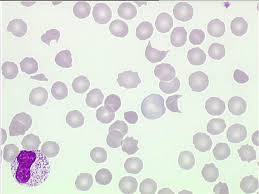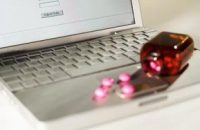Outcomes of Lidocaine Effects on Immunocompetent Cells
 Previous studies have suggested that lidocaine has profound effects on both the structure and function of immunocompetent cells. Lidocaine has been shown to reversibly inhibit alveolar macrophage hexose monophosphate shunt activity in a dose-dependent fashion if cells are exposed for 20 minutes or less. Other studies performed on human peripheral blood mononuclear cell populations have demonstrated inhibition of mitogenic responses to PH A and decreased percentages of T-cells by sheep rosetting techniques after lidocaine exposure. These effects have been reversible where exposure times have been short. Decreases in viable cell numbers have also been noted with prolonged lidocaine exposure. Furthermore, neutrophil particle phagocytosis is decreased by exposure to lidocaine, but the reversibility of hat defect has not been documented. Animal studies have demonstrated reversible decreases in phagocytic capacity of monocytes, while monocyte-mediated antibody dependent cellular cytotoxicity has been reported to be increased by lidocaine exposure. All of these findings have been of great interest to us, as they have implications for studies of immunocompetent cells obtained from human alveolar lavage preparations where lidocaine has been used for local anesthesia during bronchoscopy.
Previous studies have suggested that lidocaine has profound effects on both the structure and function of immunocompetent cells. Lidocaine has been shown to reversibly inhibit alveolar macrophage hexose monophosphate shunt activity in a dose-dependent fashion if cells are exposed for 20 minutes or less. Other studies performed on human peripheral blood mononuclear cell populations have demonstrated inhibition of mitogenic responses to PH A and decreased percentages of T-cells by sheep rosetting techniques after lidocaine exposure. These effects have been reversible where exposure times have been short. Decreases in viable cell numbers have also been noted with prolonged lidocaine exposure. Furthermore, neutrophil particle phagocytosis is decreased by exposure to lidocaine, but the reversibility of hat defect has not been documented. Animal studies have demonstrated reversible decreases in phagocytic capacity of monocytes, while monocyte-mediated antibody dependent cellular cytotoxicity has been reported to be increased by lidocaine exposure. All of these findings have been of great interest to us, as they have implications for studies of immunocompetent cells obtained from human alveolar lavage preparations where lidocaine has been used for local anesthesia during bronchoscopy.
Our study documents that immunocompetent cells exposed for periods of time similar to those which occur with routine lavage procedures are profoundly affected by concentrations of lidocaine known to be present in these fluids. Effects were pronounced on functional studies, including mito-genic responses of whole mononuclear cell populations, as well as phagocytosis and hexose monophosphate shunt activity of isolated monocytes on neutrophils. Lymphocyte markers for T-cells and T-lymphocyte subpopulations and B-cells were not affected, and monocyte marking with monoclonal OKM1 antibody was similarly unaffected. However, monocyte enumeration by alpha-naphthyl butyrate esterase staining was sensitive to prolonged exposure to lidocaine. This finding is especially important as exposure to lidocaine may thus effect the number and proportion of alveolar macrophages detected in lavage preparations similarly stained. Functional effects appeared to be dose- and time-related, and were not noted when exposed to concentrations as high as 12 mmol lidocaine occurred for 25 minutes or less.
An inherent problem in our study is the fact that peripheral blood leukocytes rather than alveolar cell populations were used for in vitro studies. We felt this to be the best initial approach as “normal” lymphocytes and neutrophils are not present in lavage preparations and are therefore not available for study. When present in disease states, they are recruited from peripheral blood. Similarly, normal human alveolar macrophages, originating from peripheral blood monocytes, are not available without previous exposure to local anesthetics. The only other possibility for obtaining these cells would require general anesthesia, an unacceptable risk. Study of lavage cells from diseased individuals undergoing diagnostic bronchoscopy under general anesthesia would introduce possible variables associated with disease.
The mechanism of the effects of lidocaine on these functional studies is unclear. Previous studies have suggested that lidocaine inhibits mitogenic responses by causing reversible surface membrane changes in lymphocytes. Other authors have suggested that effects are due to alterations in the number of viable cells. It is probable that more than one mechanism is operative, and that different mechanisms affect different immunologic functions.
Extensive studies of alveolar lavage cell populations have been hindered by the small numbers of cells obtained by using routine lavage techniques. Animal studies have demonstrated striking increases in the number of cells obtained with the use of lidocaine in alveolar lavage solutions. Our study demonstrates that increased numbers of alveolar lavage cells may be obtained by including lidocaine in fluids used for lavage. Eight mmol lidocaine was selected for this initial investigation, as lavage with 100 ml of 8 mmol lidocaine solutions was possible without exceeding the maximum dose recommended to be given at a single interval. Further studies will require monitoring of serum lidocaine levels, especially if higher concentrations of lidocaine are used.
The distribution of cell types obtained with lidocaine containing lavage fluids in our study was similar to that seen with lidocaine-free fluids. It is possible that the cells obtained from patients with active immunologically-mediated lung diseases by using lidocaine in lavage fluids may be more representative of those in the pulmonary parenchyma than those obtained with saline solution washes. This is plausible as lidocaine actively detaches adherent cells rather than simply washing away those which are loosely adherent and are perhaps senescent.
Finally, our results suggest that future investigations of the functional aspect of alveolar immunocompetent cells require that careful attention be given to the time and dose of exposure to lidocaine. Exposure of concentrations of 12 mmol or less for periods of 25 minutes or less apparently have no significant detrimental effect on these assays. Optimally, lavage fluids should be diluted with large volumes of buffer solution, spun down and washed free of lidocaine prior to their transport to the laboratory. On the other hand, lidocaine appears to be a two-edged sword: at the same time facilitating an increase in the number of cells obtained for study when included in lavage solutions.
The cellular functions shown (in this preliminary study) to be affected require further investigation. This can probably best be performed by quantitation of lidocaine levels in a large number of lavage fluids from normal volunteers and statistical analysis of the associations between these levels and each function. Furthermore, if peripheral blood cells are to be used in functional analysis of alveolar cells, blood for these studies should be taken prior to lavage of the patient so that lidocaine exposure will not occur in vivo.
Want to know more about lidocaine? Read here:
Antiarrhythmic Drug Therapy: Lidocaine
My Canadian Pharmacy about Outcomes of Lidocaine Effects on Immunocompetent Cells







